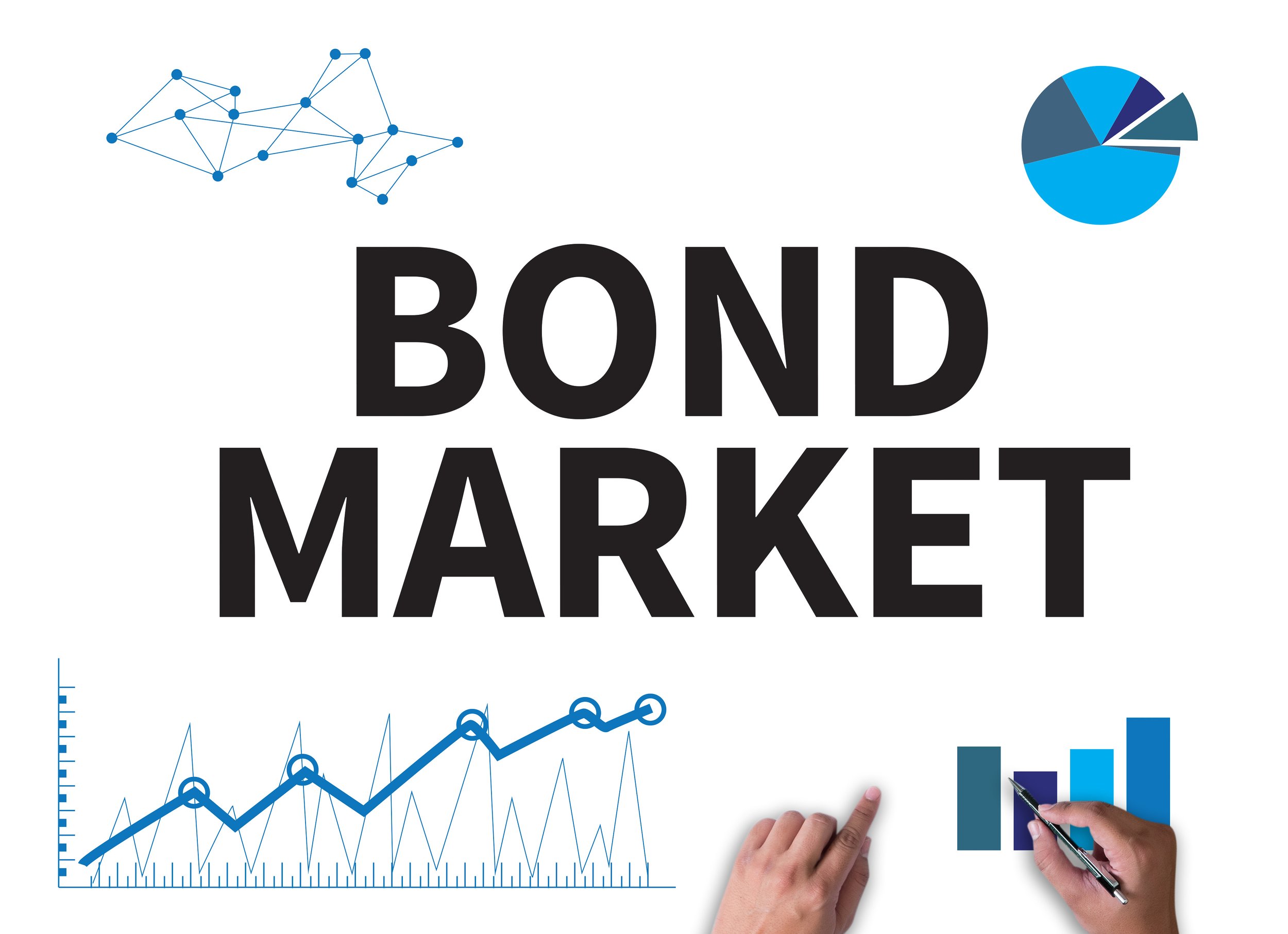The 7 Best Short Term Investments to Grow Your Money
The numerous Federal Reserve interest rate hikes in 2022 created a great opportunity for short-term investing in 2023. Long-term investing should be the focus for the majority of your money. However, it’s always a good idea to keep short term savings for your 3-6 month emergency fund. Anyone with excess cash would be wise to consider these current short-term investments. There are several investments that are currently producing yields not seen in the past 20 years. Therefore, my goal throughout this blog is to educate the reader on seven different short-term investments to help grow their money in 2023.
Key Takeaways:
· Exploring Money Market Accounts for Short-Term Investing
· The Benefits of a One-Year CD
· What About Short-Term Bond Funds?
· Taking Advantage of Treasury Bonds
· Is a Fixed Annuity Right for You?
· I-Bonds
Exploring Money Market Accounts for Short-Term Investing
The first investment is an online money market account. In the past, everyone would use their local bank because it was close by. Although, the United States continues to evolve and the need for brick-and-mortar banks has decreased. People want to make transactions, deposits, etc. electronically to save time. The benefit has been the rise of online banking.
Websites such as bankrate.com and nerdwallet.com provide key information about Credit Cards, Personal Loans, High Yield Savings Accounts, CD rates, etc. To find the best money market account, you would click on the High Yield Savings Accounts option. Bankrate.com for example, will provide you with their rating of the account (5-Star Scale), as well as the Annual Percentage Yield (APY), and the minimum balance for APY. You could also select “View Details” to not only see more key facts about the account, but also Bankrate’s view with an included pros and cons list.
Once you have selected an account that you are interested in opening, I would suggest doing another round of research. If you google the money market account, you should be able to see reviews from other people. There are also various limitations that could have started after Bankrate had posted their review. Therefore, you need to make sure that you conduct your full due diligence to understand all angles of the account before opening it.
I have been a client of Bank of America for a long time as it’s where I hold my personal and business accounts. Unfortunately, Bank of America does not pay a high-interest rate on idle money. This is the base for many banks. Online money market accounts pay substantially more interest than any of the accounts that I currently hold. The issue is that changing banks is a hassle, it can involve a lot of steps, time, paperwork, and frustrations. Therefore, I would suggest that you instead take some of the money that you are not earning interest on and transfer it to an online money market account. You can find several accounts that pay over 3% annually, which is the highest we have seen in years.
The second short-term investment that I recommend is a mutual fund money market account. There are two varieties of money market accounts. One is through a bank or credit union and the other is through a mutual fund company. If you are an avid follower of my blog, you would know that the custodian of my client accounts is TD Ameritrade Institutional which allows access to several money market accounts. Since the merger with Charles Schwab, the number of available funds has increased.
One of the added funds is the Schwab Value Advantage Money Fund (Ticker: SWVXX). This fund currently pays 4.27% with a .34% expense ratio so net of fees the investor receives 3.93% annualized. I mention this because if you hold an account with Charles Schwab or TD Ameritrade, then you can invest in SWVXX and receive this rate today. The idle cash that you hold is likely to earn 0.1-0.3% interest. Instead, you can invest the money into 3.93% to improve your annual percentage return, especially when inflation has remained high throughout the year. There are no lock-up periods so once you require the funds you can simply sell it at any time.
Understand that these rates are subject to change. The Federal Reserve is in the middle of a series of rate hikes that impact all interest-yielding products. These rate hikes will cause the yield provided by money market accounts to continue to increase until the Fed pivots. However, if the The Federal Reserve were to reduce interest rates it will reduce the annual interest that money funds are paying.
The Benefits of a One-Year CD
The third short-term investment that I would recommend is a one-year CD. Currently, a one-year CD pays a little bit more than a money market fund. One-year CDs can be purchased through a bank, whether that be a local or online bank. A benefit to trying a local bank is that certain ones offer promotional rates where you can receive a higher yield.
One thing to keep in mind when dealing with banks is the FDIC insurance limit. FDIC insurance typically covers up to $250,000 per depositor so that if the bank were to lose your money, then you would be reimbursed up to that amount. Therefore, I would not suggest investing more than the FDIC limit as any funds above that amounts are not protected. This applies not only to CDs, but also checking accounts, savings accounts, and money market deposit accounts (MMDA). The other thing to understand is that if you need the money back before the CD matures then there are penalties.
There are also brokerages such as TD Ameritrade that offer brokered CDs which are CDs sold through the brokerage firm and backed by a bank. These brokered CD’s often pay a higher rate because they are sold in a more competitive market. For example, local banks sell CD’s to people who live in the immediate area compared to brokered CD’s that can be sold to anyone in the nation. Another benefit of brokered CD’s is that they can be sold on the secondary market if you ever needed the money. The subsequent price will depend on the time to maturity and the direction of interest rates since the CD was purchased.
What About Short-Term Bond Funds?
The fourth short-term investment that I would suggest is a short-term bond fund. A bond fund is a fund that invests in short-term bonds. Short-term bonds are typically considered bonds with a maturity of one year or less. However, short-term bond funds will purchase bonds with up to a five year maturity. The types of bonds that these funds purchase are government, municipal, and corporate.
The fund that I like to use is the JP Morgan Ultra Short ETF with ticker JPST. As of January 24, 2023, the SEC 30-Day Yield is 4.51%. The fund has an expense ratio of .18% which reduces the annualized fund return to 4.33%. Another short-term bond fund worth your attention is the PGIM Ultra Short Bond ETF with ticker PULS. The SEC 30-Day Yield is currently 4.47% with a net annualized return of 4.32% after considering the .15% expense ratio. As you can see, both of these short-term bond funds provide similar returns so there is no reason to accept less.
When interest rates increase, the demand for the bonds decreases and so does the price of the bond. For over a year now, the Federal Reserve has continued to raise interest rates to counter inflation. The issue is that it’s taken a toll on the bond funds that people thought were the safest place for their money. A benefit to short-term bond funds is that include shorter durations which means they are less affected by the change in rates. This difference can be seen as JPST had a modest 1.14% return compared to the Vanguard Total Bond Market ETF (BND) which fell by 13.11% in 2022.
Taking Advantage of Treasury Bonds
The fifth short-term investment would be treasury bonds. A current development in the Treasury market is that short-term bonds are paying a higher interest rate than long-term bonds. You can currently purchase a 2-year treasury bond with a Yield to Worst (YTW) of 4.13% compared to a 10-year treasury bond that pays 3.45%. Generally, long-term bonds will pay a larger rate to compensate investors for holding their money for a longer period of time. The Federal Reserved caused this with the increase of interest rates over the past year, but will eventually revert to normal. A bonus is that Treasury bonds are not subject to State Income Tax. This will help you if you live in a state that has state income tax such as where I live in Connecticut.
One misconception is that you must hold treasury bonds until maturity. You do have liquidity and can sell the treasury bond if you need the money. Although if interest rates have gone up since you purchased the bond, then the price of your bond will have gone down. While the price of the bond would go up if interest rates decreased since the purchase of the bond. Therefore, bond prices change every day based on interest rates, which is important to understand before purchasing. You would want to be committed to holding the Treasury Bond until it matures.
Is a Fixed Annuity Right for You?
The sixth short-term investment is a fixed annuity. Compared to the investments above, a fixed annuity can sometimes provide a higher yield, but has less liquidity. It’s a contract with an insurance company where they take your initial investment and pay back a fixed rate over time. The reason that you receive a larger yield is because annuities have less liquidity and surrender fees. Surrender fees are applied when the investor in a fixed annuity sells the annuity within a certain period of time. Typically the surrender period will range between 3 and 10 years so that is a key piece of information to know before purchasing an annuity. There can also be subject to a Market Value Adjustment which can create further losses if you want to liquidate a fixed annuity before it’s surrender period is up.
I have covered fixed annuities several times on my podcast. If you are interested in learning more, then I would recommend you listen to my podcast, “Should You Buy An Annuity?”
I-Bonds
The final short-term investment that I would recommend are I-Bonds. I-bonds, also known as Series I Savings Bonds are backed by the United States Federal Government. They were created to help investors hedge their portfolios against high inflation. These bonds have increased in popularity over the past two years as the high levels of inflation have caused I-bonds to pay out large amounts of interest.
The interest rate paid by I-bonds is measured using the change in the Consumer Price Index (CPI) over the preceding six months. The calculation uses both a fixed and inflation-adjusted rate. The fixed rate is typically low, so any large changes in the I-bond interest rates are due to changes in the inflation-adjusted rate. The current period spans from November 1, 2022 to April 30, 2023 and pays an annualized rate of 6.89% so anyone that purchases I-bonds before May 1st 2023 will receive half of that rate or 3.45% for the next 6 months. The rate for the following 6 months will be determined on May 1st 2023. This will be based on the change in CPI-U from October 2022 through March 2023. Prior to this period of high inflation, I-bonds were paying 1%-1.5% interest annualized.
There are some issues with I-bonds you should be aware of before purchasing them. The first issue with I-bonds is that rates will eventually revert back to this 1.5% level as inflation cools down. Investors should not expect 5% or more each year from their I-bonds. The next issue is the purchase limitations. The rules state that up to $10,000 of I-bonds can be purchased per Social Security number or Tax-ID number per year. Each spouse can purchase $10,000 worth of I-bonds along with $10,000 worth for any minor children in your family. Third is that you can only purchase them buy opening an account with www.treasurydirect.gov. Their system isn’t the easiest to work with and if you’re purchasing them in multiple social security or tax-id numbers you’ll need a separate account at www.treasurydirect.gov for each one. The final issue is that I-bonds are not liquid for one year and if you sell the I-bonds within 5 years of purchase, you will have to pay back 3 months’ worth of interest. You’ll have to weigh the pros and cons of I-bonds to determine if they’re right for you.
If you are interested in further information about I-Bonds then check out my podcast, “Increase Your Cash Return with I-Bonds.”
To learn about my recommended long-term investments, check out my blog, The 5 Best Long-Term Investments to Grow Your Money.



